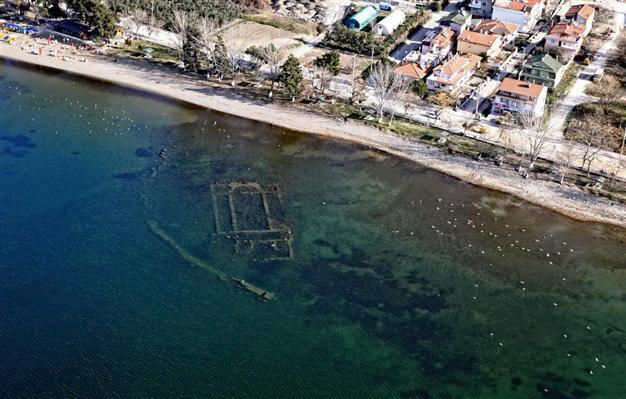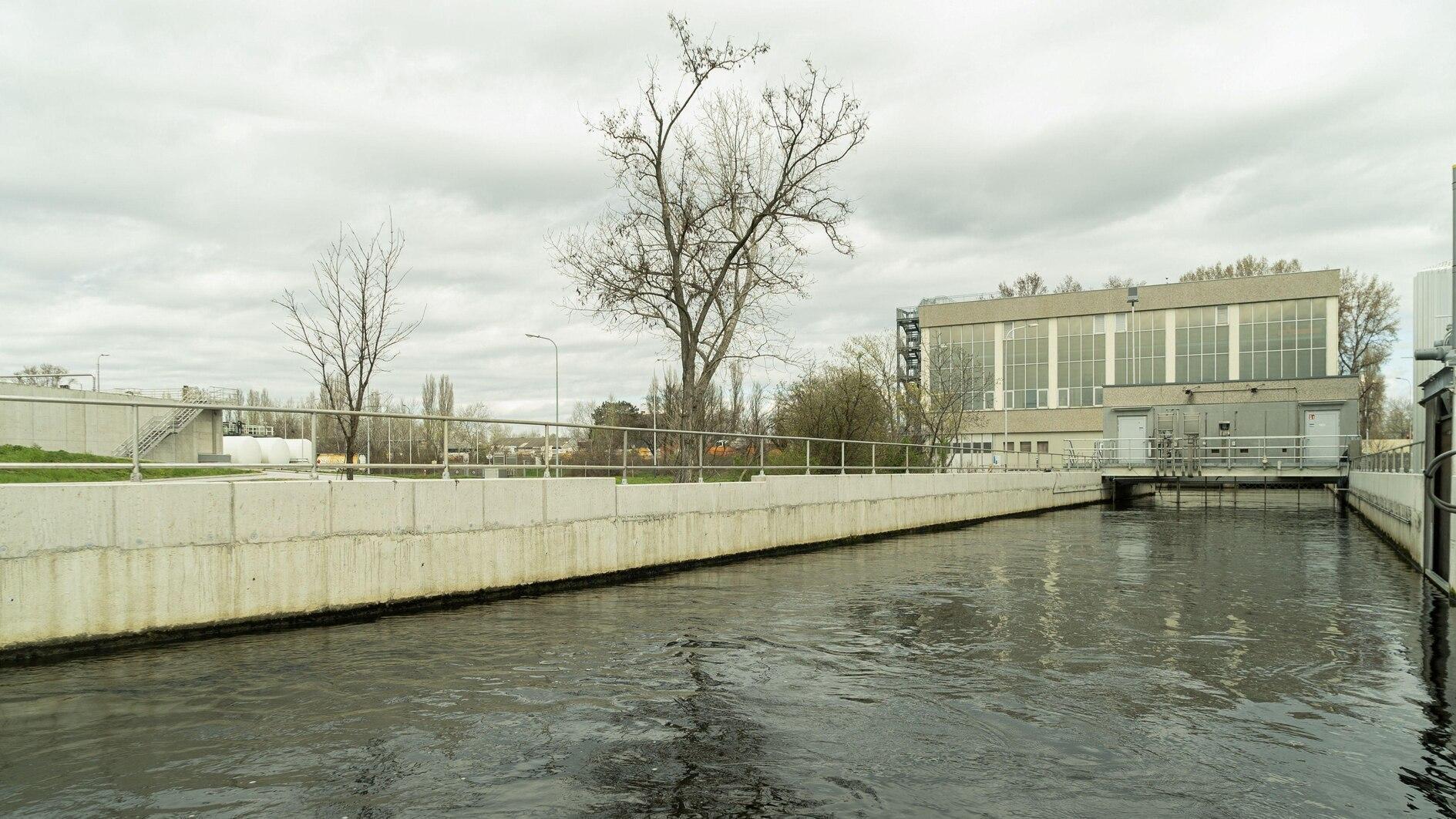İznik’s basilica among top 10 discoveries
BURSA – Doğan News Agency

DHA Photo
The remains of a nearly 1,600-year-old basilica, which was discovered in February this year under Lake İznik during a photo shoot from the air, was shown among the top 10 discoveries of the year by the Archaeological Institute of America. The early Byzantine era basilica, which has the traces of architecture from the early period of Christianity, was found about 20 meters from the shore. The remains are currently lying in water, which is about one-and-a-half to two meters deep.Speaking after the discovery, Uludağ University Head of Archaeology Department Professor Mustafa Şahin said the basilica had been discovered while photographing the city from the air to make an inventory of the historical and cultural artifacts, they had held repeated meetings with experts on the Eastern Rome, and examined lots of resources.
Şahin said they had encountered the name “St. Neophytos,” adding, “Neophytos is among the saints and devout Christians who were martyred during the time of Roman emperors Diocletian and Galerius, when bans and punishments against Christians were common. According to resources, he was a saint who was killed by Roman soldiers in 303, 10 years before the Edict of Milan that freed Christianity.”
“Only 100 miles from Istanbul, the ancient city of Nicaea, on the shores of Turkey’s Lake İznik, is not remote or unknown. So archaeologist Mustafa Şahin was in for a shock when a routine aerial survey of the lake revealed traces of a 5th century basilica. “I did not believe my eyes when I saw it under the helicopter,” says Şahin. “I thought to myself, ‘How did nobody notice these ruins before?” The site is now slated to become an underwater archaeological museum,” reported Archaeology.org, a publication of the Archaeological Institute of America.
A beloved saint
Şahin said the church was established with his name in the place where he was killed. He said the date of the church’s construction was not precisely determined, but it could have been built after 313.
“There is one more date that is important for us. Most probably, it could have been built in 325 after the first council meeting in İznik. In any case, we think the church was built in the 4th century or a further date. It is interesting that we have gravures from the middle ages depicting this killing. We see Neophytos being killed on the lake coast,” he said, adding that he was a beloved saint.
According to ancient resources, Christians definitely stopped by İznik in the middle ages while making their pilgrimage, and visited the church. “Legend has it that people in İznik were asking for help from the body of Neophytos when they were in difficulty,” he said.
Other discoveries
Among the top 10 discoveries are 17 new monuments and thousands of as-yet-uninterpreted archaeological features in the region of Stonehenge in England; a giant hoard of 22,000 Roman coins discovered in Devon, England; the massive Amphipolis tomb in Greece; a timber structure that was discovered during a dig at an active Buddhist shrine in Nepal and is believed to be the world’s oldest known Buddhist shrine; Neanderthal genetic material discovered by scientists in Jerusalem; the discovery of one of the two ships belonging to the Franklin Expedition lost in 1846 in the frigid Arctic waters in Canada; analysis of funerary wrappings that have been stored in Britain’s Bolton Museum since the 1930s has established that Egyptians began mummifying the dead as early as 4300 B.C.—1,500 years earlier than previously thought; a Viking fortress in Koge, Denmark; the 9,000-year-old remains of a hunter, known as Kennewick Man, near the Washington-Oregon border.
















